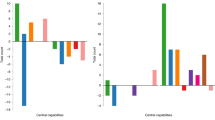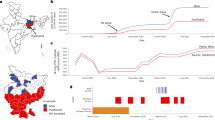Abstract
Fuel poverty is widely recognised as distinct form of injustice and social inequality and a front burner issue in the last three decades in the UK. The crisis affects 4.5 million households in the UK, and it is a major high-risk contributor to health of elderly people (NEA in Effects of Living in Fuel Poverty, NEA.ORG, London, 2020, [1]). Thus, the consequences of fuel poverty range from psychological stress, worry and isolation to serious health conditions such as respiratory and circulatory diseases. The aim of the study is to investigate the role of fuel poverty on reoccurring health risks of elderly people. The study adopted quantitative research methods with participants drawn from West Midlands region of England - UK; an area with high population of elderly people, carers, health professionals and energy professionals. Findings from the survey indicate that fuel poverty is one of the major aspects that contributes to health implications among elderly people in the UK.
You have full access to this open access chapter, Download conference paper PDF
Similar content being viewed by others
Keywords
1 Introduction
Fundamentally, a household is in fuel poverty when occupants face high cost of keeping adequately warm due to low income. Hence, the three main issues that determine fuel poverty are household income, cost of energy and energy efficiency. Numerous academic literatures on fuel poverty mainly focus on policy aspect and affordable/cold homes links to health problems [2]. However, research regarding the role of fuel poverty on health risks of elderly people is scarce. The most recent data by National Energy Action (NEA) [1, 3] reported that there were 4.5 million families in the UK living in fuel poverty. The aim of this paper is to investigate whether fuel poverty is one of the factors that contributes to health issues among the elderly people.
2 Fuel Poverty and Health
Fuel poverty is having to spend 10% or more in household net income to heat their homes to an adequate standard of warmth [2]. Subsequently, there is fine line between fuel poverty and living in poverty. The former links to shortage of income or wealth whilst the latter happens when household’s resources are well below their minimum needs [1].
Relationship between fuel poor and health has been subject of much debate in the UK for many years with most research linking the problem to cold dump houses usually occupied by elderly people. However, most research does contribute to knowledge about elderly people cases and what happens to their health when they live in cold or less energy efficient homes [4, 5]. The negative impact of cold temperature is mostly felt by older people and it is often exacerbated by pre-existing health conditions [3]. Consequently, elderly people are at higher risk of increased blood pressure and blood coagulation both linking to low temperature and can lead to respiratory and circulatory conditions [6]. In winter period, elderly people who are between the age bracket of 65 and over are subject to the greatest increase of deaths. For example, in 2017/18 winter period there were 50,100 excess winter deaths (EWDs) in the UK [7]. Table 1 below shows excess winter deaths from 2015 to 2018.
3 Research Methods
The results from this paper is drawn on findings from quantitative survey of elderly people, health professionals and energy professionals living in West Midlands region in the UK. The main reason for choosing the area is due to its high population of low-income people and high number of excess winter deaths compared to other parts in the UK [7]. Questionnaire administered included both online and face to face with each category measuring the study objectives. Stratified random sampling was used to select the study quantitative data.
Apart from quantitative approaches, archive data about Excess winter deaths and temperature from 2014-2019 were obtained and analysed in order to have a broad view in how low temperature during winter affects elderly people health. The archive data were retrieved from Office of National Statistics (ONS) and UK’s Meteorological office website. Months used for the winter temperature are December, January, February and March.
3.1 Quantitative Data Analysis
Total of 100 questionnaires were administered, 92 were returned and 8 were considered invalid because they were completed incorrectly. The 92 returned questionnaires focussed in three areas; elderly people accommodation and energy affordability, energy professional tackling of fuel poverty and health professionals reporting on common health problems associated with elderly people. In line with their status and discipline different types of questions were asked to the participants. For instance, with the elderly people, the questionnaire asked whether they prioritise energy bills before food and clothing. 41% and 34%of the respondents ticked strongly agree/agree that they prioritise their energy bills before buying essentials such as food and clothing. Figure 30.1 shows the prioritising of energy bills before other basic needs by the elderly people.
The health professionals were asked about the most common reported cold related disease among elderly people. Respiratory and influenza was ticked as the most common cold related disease among elderly people. Figure 30.2 illustrates the most common cold related diseases among elderly people.
Lastly, energy professionals were asked whether high energy price and low income contribute to fuel poverty. 43% and 39% of the respondents strongly agree/agree that high energy price and low income contribute to fuel poverty. Figure 30.3 shows contribution of fuel poverty by issues such as high energy price and low income.
Additionally, correlation analysis was conducted using ONS archive data for years 2014 to 2019 excess winter deaths and winter month temperature between the period. The correlation coefficient between EWDs and winter month temperature produced a value of 0.63; meaning there is a relationship between the winter months temperature and EWDs. Figure 30.4 shows excess winter deaths and winter monthly temperatures for the years 2014 to 2019. Meanwhile, Fig. 30.5 illustrates relationship between health disease and 12 calendar months.
4 Conclusion
The paper investigated the role of fuel poverty in health risk of elderly people in the UK. Evidence from the survey reveal that study participants have perceived view on strongly agree that fuel poverty plays significant role in health risks of most elderly people. Besides, ONS archive used for correlation analysis of diseases, excessive death and climatic conditions show that there is relationship between cold condition and health risk of elderly people. Hence, this echoes the prompt development of housing strategy with specific energy efficiency adaptive features, cost effective and universally available to meets the needs of elderly people in the UK.
References
NEA, Effects of Living in Fuel Poverty, NEA.ORG, London, 2020
R. Moore, Definitions offuelpoverty: implicationsforpolicy. Energy Policy 40, 19–26 (2012)
J. Hills, Getting the measure of fuel poverty: final report of the Fuel Poverty Review, London School of Economics and Political Science, London (2012)
A. Kearnes, E. Whitley, A. Curl, Occupant behaviour as a fourth driver of fuel poverty (aka warmth & energy deprivation). Energy Policy 129, 1143–1155 (2019)
C.W. Price, K. Brazier, W. Wang, Objective and subjective measures of fuel poverty. Energy Policy 49, 33–39 (2012)
M.R. Team, The Health Impacts of Cold Homes and Fuel Poverty, Friends of the Earth, London (2011)
ONS, Excess Winter Mortality in England and Wales, ons, London (2019)
Author information
Authors and Affiliations
Corresponding author
Editor information
Editors and Affiliations
Rights and permissions
Open Access This chapter is licensed under the terms of the Creative Commons Attribution 4.0 International License (http://creativecommons.org/licenses/by/4.0/), which permits use, sharing, adaptation, distribution and reproduction in any medium or format, as long as you give appropriate credit to the original author(s) and the source, provide a link to the Creative Commons license and indicate if changes were made.
The images or other third party material in this chapter are included in the chapter's Creative Commons license, unless indicated otherwise in a credit line to the material. If material is not included in the chapter's Creative Commons license and your intended use is not permitted by statutory regulation or exceeds the permitted use, you will need to obtain permission directly from the copyright holder.
Copyright information
© 2021 The Author(s)
About this paper
Cite this paper
Abdi, A.M., Arewa, A., Tyrer, M. (2021). Fuel Poverty and Health Implications of Elderly People Living in the UK. In: Mporas, I., Kourtessis, P., Al-Habaibeh, A., Asthana, A., Vukovic, V., Senior, J. (eds) Energy and Sustainable Futures. Springer Proceedings in Energy. Springer, Cham. https://doi.org/10.1007/978-3-030-63916-7_30
Download citation
DOI: https://doi.org/10.1007/978-3-030-63916-7_30
Published:
Publisher Name: Springer, Cham
Print ISBN: 978-3-030-63915-0
Online ISBN: 978-3-030-63916-7
eBook Packages: EnergyEnergy (R0)









